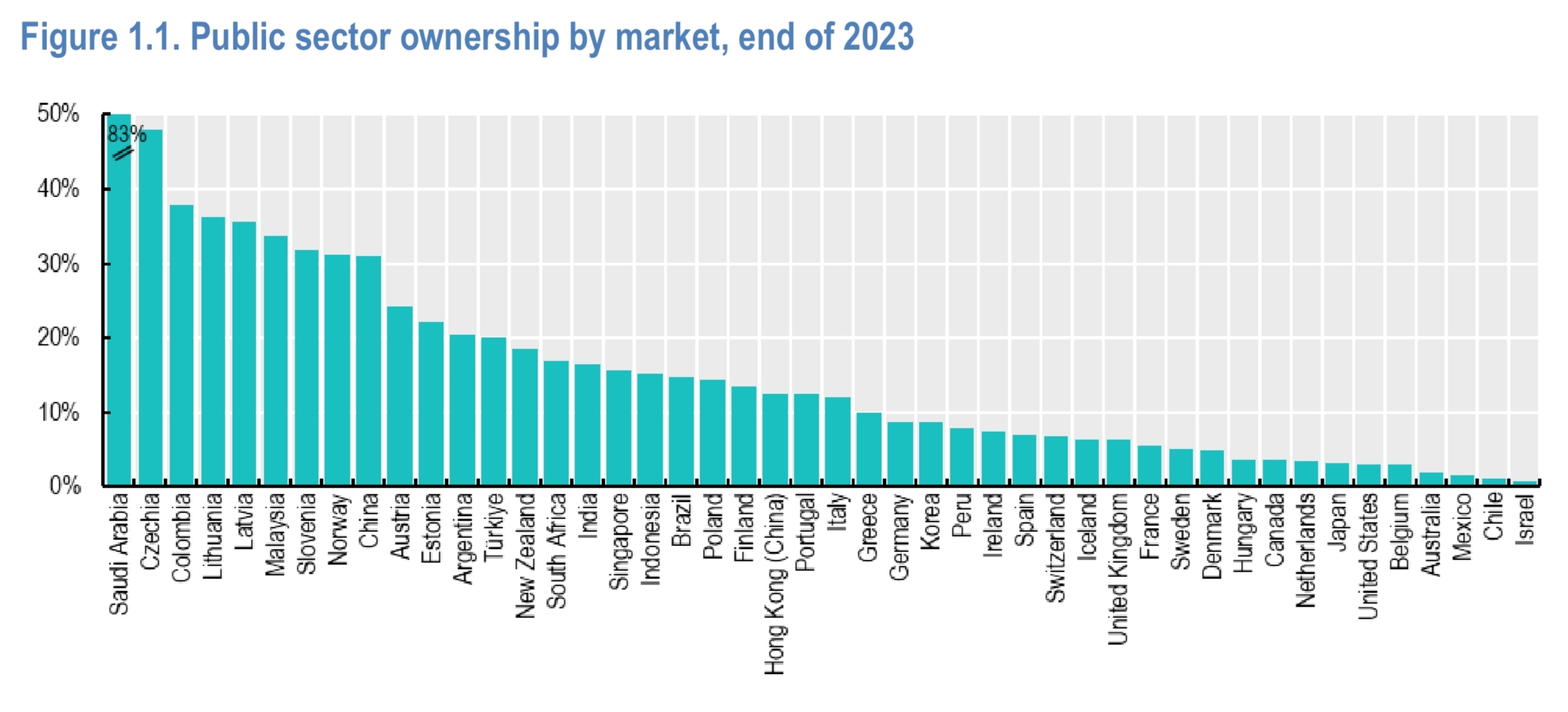https://rooseveltinstitute.org/publications/the-role-of-state-ownership/
Gemini
Okay, let's break down the share of state ownership in European countries. It's important to understand that there isn't one single, simple number because:
- It varies significantly by country: Some European nations have a long tradition of extensive state ownership, while others have pursued widespread privatization.
- It varies by sector: State ownership is often concentrated in specific industries like energy, transportation (railways, airports), postal services, and sometimes telecommunications and banking.
- Measurement differs: The "share" can be measured in different ways, such as:
- The value of assets held by State-Owned Enterprises (SOEs) as a percentage of GDP or total national assets.
- The contribution of SOEs to national GDP.
- The number of people employed by SOEs as a percentage of the total workforce.
- The number of SOEs.
- Data isn't always perfectly comparable or up-to-date: Consistent, cross-country data collection can be challenging.
General Overview and Trends:
- Historical Context: Many European countries nationalized key industries after World War II.
- Privatization Wave: Starting mainly in the 1980s (led by the UK) and accelerating after the fall of the Iron Curtain in the 1990s, many European countries privatized state assets. This was driven by beliefs in market efficiency, EU single market rules, and fiscal needs.
- Continued Significance: Despite privatization, SOEs remain significant economic players in many European countries, particularly in network industries (energy, rail) and sectors considered strategically important.
- Recent Shifts: Events like the 2008 financial crisis, the COVID-19 pandemic, and the recent energy crisis have led to renewed debate and, in some cases, increased state intervention or support for critical companies, blurring the lines slightly again.
Country Variations (Examples):
- Higher State Ownership:
- Norway: Has significant state ownership, notably in the energy sector (Equinor) and telecommunications (Telenor), largely managed through its sovereign wealth fund.
- Finland: Also maintains considerable state holdings in various sectors.
- France: Traditionally had very high state ownership ("dirigisme"). While significant privatization has occurred, the state retains major stakes in energy (EDF), transport (SNCF, ADP), aerospace/defense (Thales), and other areas.
- Eastern European Countries: The legacy of centrally planned economies means some countries still have notable state presence, though the extent varies greatly depending on their transition path (e.g., Poland's energy sector).
- Lower State Ownership:
- United Kingdom: Pursued extensive privatization from the 1980s onwards (telecoms, energy, water, rail, airlines). State ownership is now relatively low compared to continental peers, though it still exists (e.g., Channel 4, part of Network Rail structure).
- Ireland: Generally has lower levels of state ownership compared to many continental European nations.
- Intermediate/Mixed:
- Germany: Has a mixed system. While many firms were privatized, the state (federal or Länder level) retains significant stakes, for example, in Deutsche Bahn (rail), Deutsche Telekom (partial), and energy companies.
- Italy: Privatized extensively but retains state influence through entities like Cassa Depositi e Prestiti (CDP) and holdings in companies like Eni (energy) and Leonardo (defense/aerospace).
- Sweden: Has privatized but still holds significant assets through state holding companies.
Key Sectors for State Ownership:
- Energy (Electricity generation/transmission, Oil & Gas)
- Transport (Railways, Airports, Ports, sometimes Airlines)
- Postal Services
- Telecommunications (though often partially privatized)
- Banking/Finance (especially development banks or stakes taken during crises)
- Defense and Aerospace
Finding Specific Data:
For precise, comparable figures, reliable sources include:
- OECD (Organisation for Economic Co-operation and Development): Often publishes reports and maintains databases on SOEs in member countries.
- European Commission: Monitors SOEs, particularly concerning competition and state aid rules.
- National Statistical Offices and Ministries of Finance: Provide country-specific data.
In summary: The share of state ownership varies widely across Europe. While a major trend towards privatization occurred over the last few decades, SOEs remain crucial economic actors, especially in strategic sectors, in many European nations. There is no single figure representing "Europe" as a whole, and the level depends heavily on the specific country and how ownership is measured.
If you are interested in a specific country or sector, I can try to find more detailed information.

